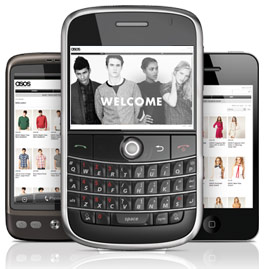Mobile commerce apps, for some marketers and retailers at least, seem to have fallen short of their early promise. As smartphone and tablet adoption soared, brands scrambled to develop and promote apps in order to generate revenue from these new mobile devices. Some succeeded on their first attempts, but many others failed to match early high expectations, and the poor little app was judged by its inability to engage, convert and drive revenue.
It would be unwise to call it quits because of these early iterations. Mobile apps can be an important part of the ecommerce ecosystem, but they have to be deployed strategically, with a firm understanding of the results they can deliver. With a little thought and creativity, you can make your mobile commerce app meet and exceed expectations.
The first thing to get right is the app’s relation with the user. As with so many things in retail, the customer – and his or her expectations – is always right. How will your app fit into their life? What importance will they place on it? Will it be on their home screen ready for action, or consigned to a rarely visited page of one-off excursions?
For a commerce app, it’s important to consider which stage of the buying process it is serving. Is it to be a shop window, where browsing and discovery are foremost and where there’s a chance to entertain and engage? ASOS scores highly here for its elegant product pages and visual emphasis – multiple images, with zoom and a choice of angles. Or is it a more goal-oriented sales engine, where an efficient search and a slick checkout experience leads to satisfied customers and repeat visits? Here, Amazon remains ahead of the pack, especially with its “scan it” and “Amazon remembers” functions that steal purchases from under the nose of bricks-and-mortar retailers.
There’s a lot to be learnt from the big boys. Econsultancy.com has surveyed and rated the UK’s best mobile commerce apps and there are few surprises, the top five being ASOS, Marks and Spencer, Play.com, Amazon, House of Fraser.
These days, if you’re about to develop an app, think tablet. Increasingly brands are optimising their mobile apps for tablet and then reformatting for phones rather than the other way round, taking advantage of the larger screen – and the user perception that a smartphone should be brisk and efficient while an iPad is for leisurely browsing. And don’t neglect the good old website. Research we commissioned at Zmags showed that 87% of connected consumers preferred to do their browsing and shopping on websites and browser-based mobile sites, with only 4% preferring smartphone and tablet branded apps.
So whatever you do, don’t design your app in isolation. Think of your other channels and make sure your app supports and complements them. Maybe it’s less of a deal-closer but brilliant at driving traffic to your website, or boosting your Facebook presence and winning you advocates. Maybe it’s a brand-builder that earns you permission to push-message tailored offers to customers. Above all, be aware of how well your channels integrate, and not just for the customer, but at the back end too. Our development work at Zmags has shown us how important it is for retailers to be able to streamline editorial production and deliver the same content across multiple channels. In the rapidly evolving ecommerce space it’s vital to step back and look at your communications as a whole, always putting the customer at the centre.
Four tips for breathing new life into your mobile commerce app:
1. Make your app fun to use. It should be dynamic and engaging, displaying your brand with a sense of fun. Pull customers in with interaction, entertainment and social functions.
2. Make sure it’s worth having. Consumers will consider where the next app they download will sit on their screen, and how important it will be to them. By keeping your content fresh and compelling consumers are less likely to move it to the low rent district on devices, or even worse, delete it.
3. Make it fit your ecommerce ecosystem. Don’t rely too heavily on the app as a stand-alone force. Know what it can reasonably contribute, and understand how other elements of your marketing strategy will work with it. Be specific about what you want it to achieve, but make sure campaign activity promotes investigation and download and encourages app-enabled purchasing.
4. Get the balance right between engagement and impulse. An engaging app’s success can be measured in more than just stark sales figures. Do you know your dwell time and bounce rate? But if conversion is a goal, the app must link back to the browser for seamless and immediate impulse purchases.






